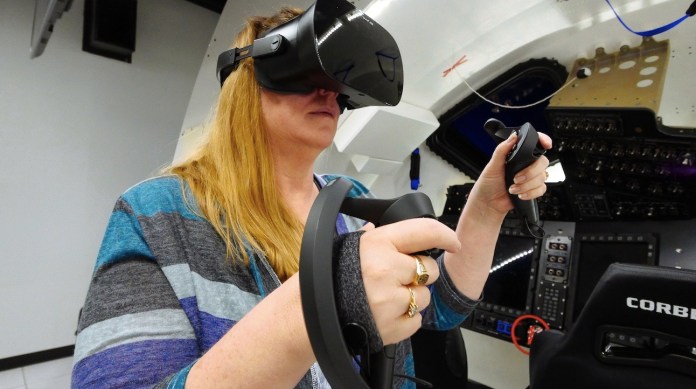On May 30, 2020, millions of Americans saw the SpaceX Crew Dragon launch NASA astronauts. This mission marked two events: First, the yield of launch to orbit capability for human spaceflight. Second, it demonstrated private sector capability to build and run a launch vehicle for human spaceflight.
While SpaceX may be the first private space business to accomplish this, it is not alone. The Starliner and the Orion capsule of Lockheed of boeing are being designed for NASA’s Commercial Crew Program, and instruction has started for safety operations on the spacecraft.
As an lawyer working and teaching about human spaceflight regulation and policy for over a decade, I’ve got a personal and skilled appreciation for astronaut progress and current spaceflight technologies.
For most, the Crew Dragon launch marked the start to a new era of commercial access to space and personal spaceflight. But given destination and logistical demands for Earth orbit or beyond, the start of personal spaceflight is far more likely to emerge inside the suborbital space market.
Commercial suborbital flights arriving next
Even a suborbital flight, compared to the current flight of SpaceX, is. That is, you establish your space vehicle to the edge of space and return down. Virgin Galactic has been inching closer to commercial suborbital launch operator standing with successful crewed evaluation flights from February 2019. Actually, a rocket-launched space capsule, Blue Origin’s New Shepard, an suborbital rocket, and also Virgin Galactic’s SpaceShipTwo, are projected to start suborbital flights catering to both space tourists and research. Each flight presents trajectory, a special spaceflight expertise and pair of regulatory demands.
While business continues to examine and refine technology and operations, the Federal Aviation Administration–which regulates launch, reentry and spaceports for U.S. commercial spaceflight–is also morphing to address the requirements of the emerging private space market.
Everything you need to know before you fly to space
Spaceflight is seen as an inherently dangerous activity. Many risks remain unidentified When some dangers of the space environment and spaceflight — such as microgravity, radiation, vibration and G-forces — are well recorded. The scope of dangers that are physiological spans pre-flight, in-flight, and post-flight operations and actions.
FAA regulations center on protection and the safety of the general public not the passengers that are called participants, on earth. This includes even a government astronaut onto a spacecraft or anyone who’s not crew.
Because of this, regulations stipulate minimum requirements for distance tourists with regard to medical fitness and training, as well as informed consent, and waivers of liability.
So potential space participants have a big risk.
Medical criteria
No standardized clinical criteria exists for screening or selecting participants. Unlike flight crew which require a Class II airman certificate, there is absolutely no requirement for fitness to fly for space tourists. Where the law is silent or lacking, the FAA’s Recommended Practices for Individual Space Flight Occupant Safety can offer guidance.
This FAA urges a consultation is received by a spaceflight player within 12 weeks of traveling from a doctor familiar or trained with aerospace medicine. Since this is a not a legal requirement, ultimately it’ll be up to the launch operator to determine fitness-to-fly and”no-go” criteria for preexisting conditions.
In a suborbital flight, passengers and the crew enjoy a brief flight that takes them to Earth and back to the cusp of space. Credit: CC BY-SA, The Conversation
Virgin Galactic, as an instance, has few restrictions: no age limitation, and weight limitation as it pertains to space vehicle requirements.
When it concerns the dangers from radiation, the FAA tries to reduce the exposure for crew members. Nonetheless, it considers the radiation dangers of a space tourist carrying a suborbital pleasure ride as insignificant.
Coaching
Very similar to airlines offer safety information the launch operators are needed to teach space tourists about the best way best to react to emergency situations such as smoke, fire, loss of crisis depart and cabin pressure.
That is a minimal need, and each launch operator determines its training protocol. Virgin Galactic, for instance, offers spacecraft cottage, communications and function, and a training with a focus on participant’s equipment.
Flight crew, in contrast, needs to be trained and qualified to carry out their functions that are vital, and withstand the pressures of spaceflight. Orbital or long-duration spaceflights, though, will likely require more stringent industry training protocols that are business than for suborbital flights.
Informed consent
The FAA put the age requirement in 18 years for civilian participants.
This is imperative to ensure the player can offer informed consent. Additionally, regulations dictate that the launch operator inform participants and crews that the U.S. government does not certify the spaceflight and space vehicle as safe for people.
The launch operator should also inform the participants in writing of the dangers of launch and reentry, the safety record of the automobile, and that both unknown and known space hazards and dangers could result in serious harm, either partial or total physical or psychological disability.
Waivers of liability
The spaceflight participant can be required to sign a mutual waiver of accountability with the Federal Government with all the commercial launch operator and an indemnification agreement.
However, participants do not sign a waiver along with different participants. Meaning, whenever an accident occurs, spaceflight participants can sue each other but generally not the launch operator or the authorities.
It would be advisable to take out insurance to protect yourself . A few companies, such as Allianz and AXA XL, are starting to supply liability insurance for civilians to take part in spaceflight.
The space industry expects that individuals might want to visit space in the future, and personal spaceflight is being marketed as the experience in scientific research and luxury escapism.
Nevertheless, spaceflight’s hazardous nature also requires understanding of the dangers and uncertainties in spaceflight. The industry is still in its infancy, along with the best regulations and practices for human spaceflight are still evolving.
– Advertisement –
